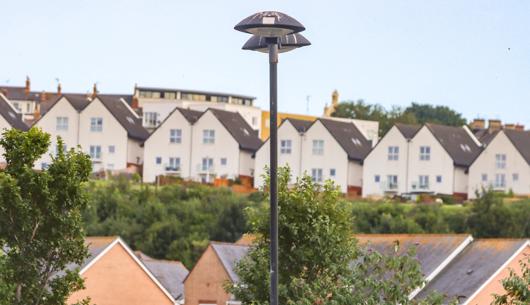The care home environment presents unique challenges and the consequences of getting fire safety wrong can be tragic. Even where they are not, fines associated with breaches of regulations can have a major impact on providers.
So how can you ensure that you are doing all you can to keep your residents safe, whilst still allowing them to enjoy their lives and the environment they live in? We identify key duties and advice.
Fire safety is regulated by the Regulatory Reform (Fire Safety) Order 2005. The Order places responsibilities on anyone with an involvement in fire safety in care homes such as registered managers, risk assessors and fire alarm technicians. However, the primary duties lie with the care provider as the employer and therefore “Responsible Person.” Local Fire Services enforce the Order, carrying out inspections either after a fire or as part of routine checks.
Fire risk assessment
Fire safety under the Order starts with the fire risk assessment and every care home must ensure that a detailed and up to date version is available, with staff informed of key findings. The risk assessment summarises the fire safety risks at a premises and the measures in place to prevent or deal with a fire. It also identifies any areas of improvement required.
There is no requirement that a fire risk assessment be carried out by an expert. Home owners or managers can, by law, carry them out themselves. However, professional assistance is generally considered helpful and cost effective for all but the smallest and simplest homes. Identifying a risk assessor can be difficult. Although there are a number of accreditation schemes, they currently include only a fraction of the market. They key factor in making your choice should be the specialist qualifications and experience of the assessor. Don’t be afraid to ask for details – no matter how well qualified, an assessor with years of experience in a different sector may not be the right person to identify the risks unique to a care home.
Fire safety guidance for care homes
Specialist guidance is available from a number of sources. Government guidance issued at the time the Order came into force is a good place to start. However, its 150+ pages illustrate that there is a lot to consider when carrying out a care home fire risk assessment.
This guidance is supplemented by guidance from the National Association for Safety and Health in Care Services (NASHiCS), in association with the Chief Fire Officers’ Association (CFOA), particularly in relation to evacuation policies and procedures. Specific guidance on individual issues such as the risks posed by mobility scooters or to smoking residents is available from NASHiCS, CFOA, the National Fire Chiefs Council (NFCC) and local Fire Services, amongst others.
More recently, London Fire Brigade has reported on its review of 177 care homes, with over half those inspections identifying failings sufficient to warrant a formal notification by the Brigade.
The London Fire Brigade’s advice for care homes can be found at here.
Nearly half of the homes reviewed did not have a sufficient fire risk assessment, the cornerstone of fire safety. Common deficiencies included assessments carried out by those without appropriate competence and assessments that did not identify dangerous roof voids.
Fire risk assessment
LFB’s review found that nearly half of the homes reviewed did not have a sufficient fire risk assessment, the cornerstone of fire safety. Common deficiencies included assessments carried out by those without appropriate competence and assessments that did not identify dangerous roof voids.
Whilst fire safety regulations do not require a fire risk assessment to be carried out by a person with any particular qualification, most care homes will benefit from the input of a professional fire risk assessor. However, it is equally vital to ensure that any assessor engaged has the requisite knowledge and experience of care homes to provide a comprehensive and workable assessment and recommendations.
Fires can spread very quickly through roof voids if they are not appropriately compartmentalised. This can cause a fire to spread quickly between different compartments of a home, undermining the evacuation strategy.
Evacuation
One of the most challenging areas of fire safety for care homes is the evacuation of residents in the event of fire, especially at night. LFB’s review noted that many homes did not have sufficient evacuation plans in place or had not adequately trained staff to carry them out. Issues included insufficient night-time staff to evacuate residents requiring assistance.
Most care homes are separated into fire safety compartments, normally replicating the fire alarm zones. The 2006 government guidance recommended that each compartment should be capable of evacuation in 2 ½ minutes. More recent updates acknowledge that this is not possible for many homes but what should providers be doing to ensure their evacuation policies and procedures are compliant?
The first issue to decide is how a fire alarm is to be dealt with. Some care homes maintain a policy of investigating fire alarms before calling 999. This has been accepted by a number of Fire Services concerned about false alarms, despite it running contrary to published guidance. The question for providers is: how long will that investigation take? Can you afford to wait that long? For larger homes with little or no history of false alarms, the answer may well be ‘No’. If in doubt, invite your local Fire Service for some advice.
In most homes it will not be necessary to evacuate all residents at once. However, almost all will be required to have a plan for evacuating at least the residents in the effected compartment. Ultimately there must be a plan for evacuating the entire home, if necessary. Providers should not rely on the Fire Service’s assistance in doing this.
It is therefore vital that there are sufficient well-trained staff to achieve this, especially at night. The best way to test this is to carry out evacuation drills and the Fire Service will expect to see evidence of this.
When planning evacuations it is vital that providers take account of the mobility needs of the residents – their personal emergency evacuation plans (PEEPs). Are extra staff needed? Is enough suitable equipment available, particularly for residents upstairs? Are too many residents with mobility issues living in the same compartment?
“Stay put” policies, or more properly “delayed evacuation”, have come under much scrutiny following the events at Grenfell Tower. The construction and staffing requirements for such a policy will mean that they are not feasible for most care homes.
That tragedy prompted the CQC to write to care homes inviting them to review their fire safety checks to ensure they are up to date, understood and applied consistently. That letter also referred to the “fabric” of premises. It is vital for the evacuation of any premises that the walls, doors, ceilings, floors, windows, etc. between different compartments and protecting escape routes remain capable of holding back fire and smoke. In a care home, where evacuation may take some time, it is even more important. If providers have any concern that this separation may have been compromised, internally or externally, they need to act immediately.
In December 2016 Brookholme Croft Limited were sentenced to combined fines and costs of £214,000, exceeding their annual pre-tax profits. One of their residents died following a fire that began when an e-cigarette battery left on charge overnight exploded. The Fire Service identified ineffective evacuation procedures, equipment and training. The home’s night-time ‘stay put’ policy was heavily criticised alongside its policy of investigating fire alarms before calling 999. A similar policy that delayed a call to the Fire Service was criticised by the coroner in respect of fourteen deaths at Rosepark care home in 2004.
In 2019, New Grange Care Home was sentenced to a £175,000 fine following the deaths of two residents and injuries to others in a fire. Insufficient night staff for effective evacuation, a lack of evacuation training and a lack of evacuation drills all formed part of the offences. This case further emphasises that it is unacceptable for a home’s fire safety strategy to rely on the Fire Service for at least the first stages of an evacuation.
Smoking residents
Residents who wish to smoke present a number of challenges for providers, some more obvious than others. Most providers are conscious of risks associated with indoor smoking and have in place suitable policies around preventing bed and furniture fires from lighters, matches or dropped cigarettes.
However, the risks do not end there. Fire Services, the Care Quality Commission and others have all issued guidance in recent years addressing the use of paraffin-based emollients for smoking residents. Such skins creams are, of course, common amongst care home residents. The guidance suggests that such products can soak into clothes, bandages and bedding creating a fire hazard.
Following further research, these warning have now been expanded to lower-paraffin content emollients and the research even suggest that emollients not containing paraffin present a similar risk. Care home and domiciliary care providers are advised to review their policies around the use of emollients and residents who smoke.
In 2017 the BBC linked 37 deaths to the issue. The same year Anchor Trust were fined £210,000 following the death of a resident left to smoke a cigarette outside one of the company’s care homes.
More recently, Wood House Care Home were sentenced to cover £100,000 in fines and costs following the death of a resident who set herself alight whilst smoking in her bedroom. An outdate fire risk assessment, particularly in respect of individual smoking risks was implicated in that case.
Providers should ensure that they assess the ability of residents to smoke safely, checking their clothes for burn marks if necessary. Consideration should also be given to fire retardant clothing, smoking aprons and personal alarms. Supervision can also play a role although it remains important to respect the wishes of each individual resident.
Safe escape routes
There are areas of fire safety that can sometimes be difficult to reconcile with the wider needs of residents. One of those areas relates to the creation of a homely, stimulating environment whilst remaining safe.
Schemes like the “Butterfly” model for dementia care encourage providers to design their care homes with reminder of residents’ past lives to help create a family-type atmosphere. However, where such items create a potential fire hazard in corridors that might be needed for evacuation in case of a fire, they may conflict with a provider’s fire safety duties.
In reality many care homes achieve welcoming, stimulating environments without compromising safety. Large flammable items or wall coverings in escape corridors can be avoided in favour of non-flammable items or items that are protected from becoming fuel for a fire. Again your local Fire Service can be an invaluable source of guidance in this area. Many are members of the Dementia Action Alliance.
In addition to these more complex issues, LFB’s review found that more basic escape route maintenance was deficient in many home, especially with regard to fire doors. Proper maintenance of door structure, self-closing devices, intumescent strips and smoke seals are vital to ensuring a fire door can do its job.
Mobility scooters
The fire safety risks associated with mobility scooters has prompted the NFCC to issue specific guidance.
Mobility scooters should be stored in areas separated from escape routes by suitable fire doors, etc. and covered by fire detectors. Although incidences of fire in mobility scooters are relatively rare, when they occur the results can be catastrophic due to the heat and toxic fumes released.
Charging scooters are at greater risk although around two thirds of relevant fires considered in the guidance resulted from arson. As a result external storage areas should be located in areas where a fire would not compromise the safety of residents by passing through windows or doors. This has led to fatalities in the past.
Fire doors
Another issue that regularly provides problems for care home owners is fire doors. It is vital that doors are kept sufficiently well-maintained to hold back smoke and fire long enough to evacuate residents. Fire Services will expect to see regular checks of door condition and prompt action where damage is found.
However, no matter the quality of the doors they provide no protection if they are open. Providers are routinely criticised by Fire Services for failing to ensure that staff and residents do not prop open fire doors. Such issues have been features of care home prosecutions in the past.
Other key fire safety priorities
In addition to those issues already mentioned, care home providers have faced fines in the tens or hundreds of thousands of pounds following prosecutions in respect of:
- Inadequate or poorly maintained fire alarms – care homes should generally have a systems that includes fire detectors in all rooms as well as fire alarms in all bedrooms and throughout the home;
- Inadequate or poorly maintained emergency lighting
- Inadequate or out-of-date fire extinguishers
- Blocked escape routes
In 2016 Shaftesbury Care Group were fined £380,000 following a fire that resulted in one of their residents being rescued by the Fire Service. Wedged fire doors, condemned fire extinguishers and a failure to act on risk assessment findings were identified.
Even where tragedy does not strike or even where no fire occurs, fire safety failures can lead to prosecutions, such as the £50,000 in fines and costs imposed on lavender Home Residential House this year for failures to properly protect its escape routes.
Care Quality Commission
It is not only the Fire Service that will take an interest in care home fire safety. The Care Quality Commission (CQC) is taking an increasing interest in premises safety, including fire safety. Where a risk assessment or Fire Service recommendation has not been followed, this can affect ratings for both ‘Safe’ and ‘Well Led’. Fire safety failings have played a part in homes being rates Inadequate and even formed part of the basis for cancelling some care providers’ CQC registrations.
In its 2017 letter the CQC wrote that it would “continue to assess fire safety when [they] register and inspect providers, focusing on passive and active fire protection and on how fire safety is managed on a day to day basis."
In 2016, Care+ Ltd went into liquidation shortly after the CQC had rated one of its services Inadequate in all areas. One of the key factors indicated was that of fire safety compliance. The company’s director, a consultant psychiatrist, was subsequently disqualified as a company director for seven years following an investigation by the Insolvency Service that focused upon the company’s failures to keep service users, including residents of the company’s nursing home, safe from fire and other risks.
Contact

Carl May-Smith
Barrister (Partner)
carl.may-smith@brownejacobson.com
+44 (0)115 934 2024








































